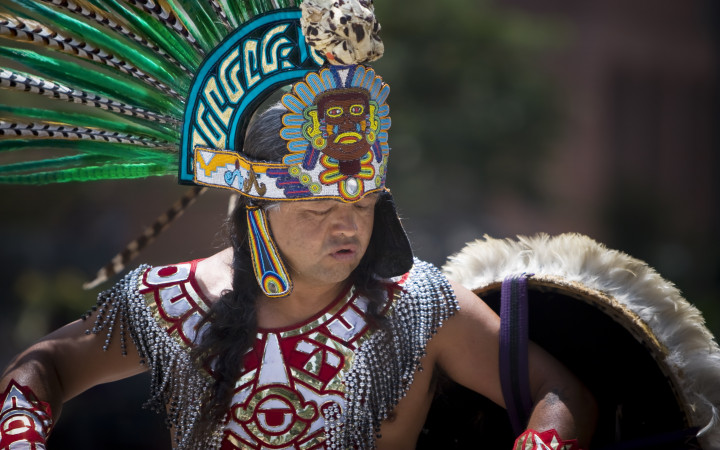Today’s Wonder of the Day was inspired by Sai from Burlington. Sai Wonders, “Who Were The Aztecs” Thanks for WONDERing with us, Sai!
Today’s Wonder of the Day is about an ancient civilization. Its people became experts in farming, built amazing stone structures, and ruled a vast empire. Who are we talking about? The Aztecs, of course!
Who were the Aztecs? These ancient people didn’t use that term. Instead, they called themselves the Mexica. According to their own stories, they came from a land called Aztlan. This name means “White Land” or “Land of White Herons.” The name “Aztec” was drawn from the name for this homeland of the Mexica people.
Where was Aztlan? Today, no one is quite sure. Experts think it may have been in the northwest of modern-day Mexico. The Mexicas came to Mesoamerica (southern Mexico and Central America) in the 12th century C.E. There, they started building the city of Tenochtitlán in 1325.
How did they choose the location of Tenochtitlán? According to the Mexica, it was based on a sign sent by one of their gods. He told them to look for an eagle holding a snake in its beak while perched on a cactus. When elders spotted this sign, they knew they’d found the place that would become their home.
The Mexica built Tenochtitlán on an island of Lake Texcoco. Over the next decades, it drew over 140,000 residents. In 1428, it allied with two other cities in the region—Texcoco and Tlacopan. Together, the three gained control of the surrounding region. This created the Aztec Empire, with Tenochtitlán as its capital.
What was life like in the Aztec Empire? It was ruled by a king who lived in Tenochtitlán. The population was made of diverse civilizations that all paid tribute to the empire. The Aztecs built a road system to connect cities. This allowed people to travel and trade. Many people paid for goods and services with cacao beans, which was a main form of money.
The Aztec Empire was one of the first civilizations to educate all of its children. Each day, kids all over the region went to school, just as children do today. There, they learned the skills and knowledge they would need to support the empire as adults. They also learned the empire’s writing system.
In Tenochtitlán, the Mexicas had an advanced system of farming. They built islands called chinampas on Lake Texcoco. These served as raised fields where the people grew crops such as beans, maize, and squash. The Aztec Empire also built irrigation systems for the entire region. These carried water from the lakes for farming in the area’s fields.
The Aztec Empire followed a 365-day solar calendar. It was similar to today’s Gregorian Calendar. Their religious activities followed a 260-day ritual cycle. In Tenochtitlán, blood offerings and human sacrifice were part of the religious practice.
In 1519, the Aztec Empire had its first encounter with European colonizers. Led by Hernán Cortés, a group of people from Spain arrived looking for gold. Once in Tenochtitlán, they kidnapped the Aztec king, Montezuma II, and tried to rule in his place.
The Mexica people fought the Spanish, who retreated in 1520. However, Montezuma died in their custody. The Spanish then returned in 1521. Many people in the Aztec Empire had died from smallpox and other diseases brought from Europe. Later that year, the empire surrendered to the Spanish.
However, parts of Aztec culture are still alive today. Over a million people speak Nahuatl, the Aztecs’ native language. Many people also perform rituals influenced by Mexica culture. Though Tenochtitlán was destroyed by the Spanish, Mexico City was built on its remains.
Unfortunately, much of what we know about the Aztec Empire is based on European accounts. The Aztecs passed down many of their stories through oral storytelling, but few written records also exist. Today, scholars continue to study Aztec texts to learn more about these ancient people.
Standards: CCRA.R.4, CCRA.L.3, CCRA.L.6, CCRA.R.10, CCRA.R.1, CCRA.SL.1, CCRA.L.1, CCRA.W.2, CCRA.L.2, CCRA.SL.3,




